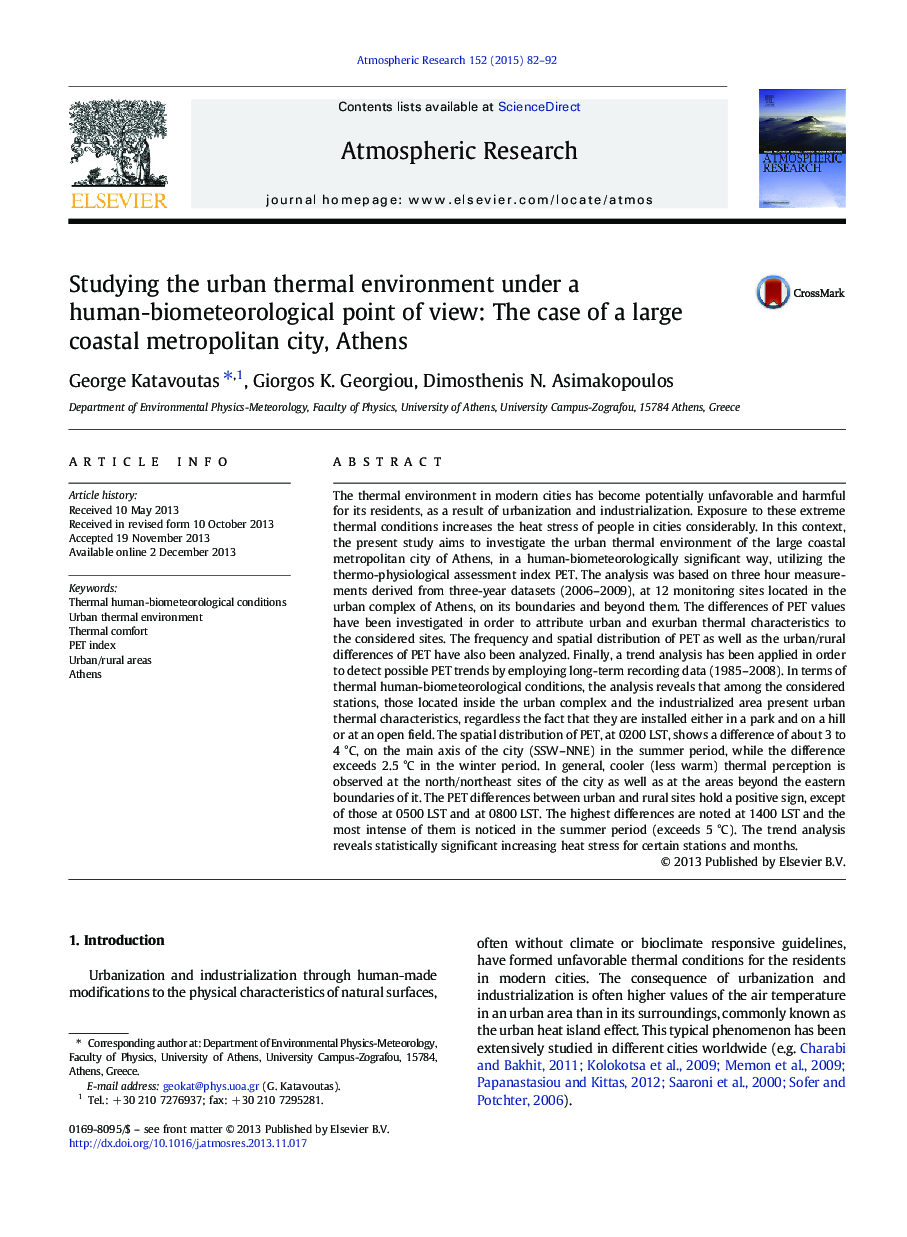| کد مقاله | کد نشریه | سال انتشار | مقاله انگلیسی | نسخه تمام متن |
|---|---|---|---|---|
| 4449834 | 1620521 | 2015 | 11 صفحه PDF | دانلود رایگان |
• Studying the urban thermal environment using real data from Athens
• The thermo-physiological assessment index PET is employed.
• PET difference exceeds 3 °C on the main axis of the city in summer at night.
• Less warm thermal perception is observed at the northeast sites and at rural areas.
• PET differences between urban–rural sites hold a positive sign except at 05–08 LST.
The thermal environment in modern cities has become potentially unfavorable and harmful for its residents, as a result of urbanization and industrialization. Exposure to these extreme thermal conditions increases the heat stress of people in cities considerably. In this context, the present study aims to investigate the urban thermal environment of the large coastal metropolitan city of Athens, in a human-biometeorologically significant way, utilizing the thermo-physiological assessment index PET. The analysis was based on three hour measurements derived from three-year datasets (2006–2009), at 12 monitoring sites located in the urban complex of Athens, on its boundaries and beyond them. The differences of PET values have been investigated in order to attribute urban and exurban thermal characteristics to the considered sites. The frequency and spatial distribution of PET as well as the urban/rural differences of PET have also been analyzed. Finally, a trend analysis has been applied in order to detect possible PET trends by employing long-term recording data (1985–2008). In terms of thermal human-biometeorological conditions, the analysis reveals that among the considered stations, those located inside the urban complex and the industrialized area present urban thermal characteristics, regardless the fact that they are installed either in a park and on a hill or at an open field. The spatial distribution of PET, at 0200 LST, shows a difference of about 3 to 4 °C, on the main axis of the city (SSW–NNE) in the summer period, while the difference exceeds 2.5 °C in the winter period. In general, cooler (less warm) thermal perception is observed at the north/northeast sites of the city as well as at the areas beyond the eastern boundaries of it. The PET differences between urban and rural sites hold a positive sign, except of those at 0500 LST and at 0800 LST. The highest differences are noted at 1400 LST and the most intense of them is noticed in the summer period (exceeds 5 °C). The trend analysis reveals statistically significant increasing heat stress for certain stations and months.
Journal: Atmospheric Research - Volume 152, 15 January 2015, Pages 82–92
